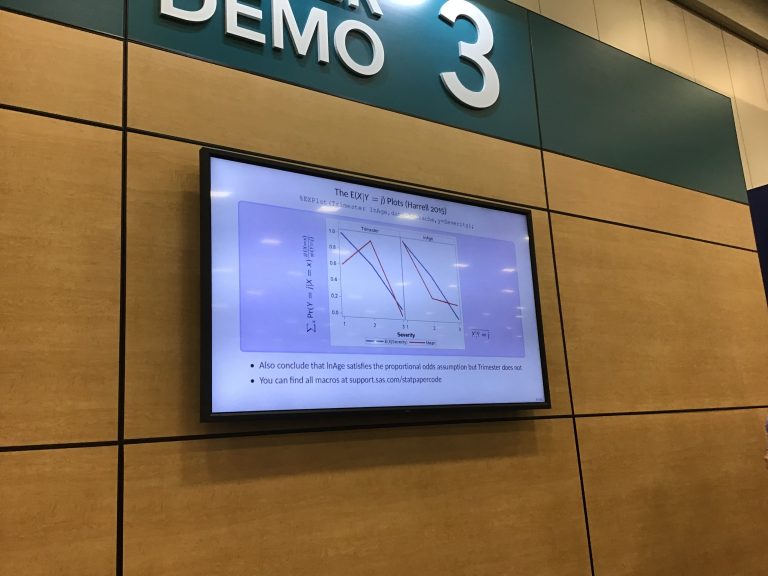Why won’t SAS see this character variable is equal?
When I selected observations where the character variable was equal to a certain value, SAS returned 0 observations – but I knew there should be a match!
When I selected observations where the character variable was equal to a certain value, SAS returned 0 observations – but I knew there should be a match!

I had more than the two tips on becoming a better programmer than I gave in the last post but I had run out of margarita. Now, being replenished with tequila and fresh lime by The Invisible Developer, here are two more. He often tells me that I should refer to myself as a developer…

I did a random sample of presentations at SAS Global Forum today, if random is defined as of interest to me, which let’s be honest, is pretty damn random most of the time. Tip #1 Stalk Interesting People I don’t mean in a creepy showing up at their hotel room way. If you see someone…

Since the last few posts detailed errors in repeated measures with PROC GLM , I thought I should acknowledge that people seem to struggle just as much with PROC MIXED. Forgetting data needs to be multiple rows This is one of the first points of confusion for students. When you do a PROC MIXED, you…
As I said in my last post, repeated measures ANOVA seems to be one of the procedures that confuses students the most. Let’s go through two ways to do an analysis correctly and the most common mistakes. Our first example has people given an exam three times, a pretest, a posttest and a follow up…
When I teach students how to use SAS to do a repeated measures Analysis of Variance, it almost seems like those crazy foreign language majors I knew in college who were learning Portuguese and Italian at the same time. I teach how to do a repeated measures ANOVA using both PROC GLM and PROC MIXED….
I was going to write more about reading JSON data but that will have to wait because I’m teaching a biostatistics class and I think this will be helpful to them. What’s a codebook? If you are using even a moderately complex data set, you will want a code book. At a minimum, it will…
Sometimes data changes shape and type over time. In my case, we had a game that was given away free as a demo. We saved the player’s game state – that is, the number of points they had, objects they had earned in the game, etc. as a JSON object. Happy Day! The game became…
When I was young and knew everything, I would frequently see procedures or statistics and think, “When am I ever going to use THAT?” That was my thought when I learned about this new procedure to transpose a data set. (It was new then. Keep in mind, I learned SAS when I was pregnant with…
I was reminded today how useful a SAS log can be, even when it doesn’t give you any errors. I’m analyzing data from a study on educational technology in rural schools. The first step is to concatenate 10 different data sets. I want to keep the source of the data, that is, which data set…